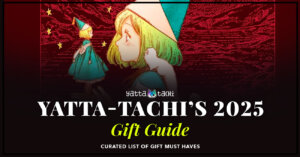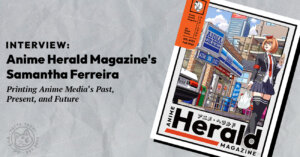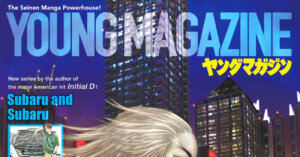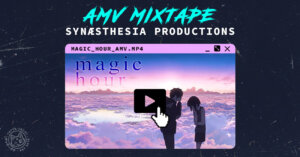If there is a game that has blown up among fans of anime, manga and video games over the past few years, it is riichi mahjong. As discussed in a previous editorial, riichi mahjong has captivated fans across the world; regional clubs have built substantial communities of players. It is not an easy game to pick up due to its various nuances and complexities. But a professional mahjong player from Japan is here to help beginners get started with confidence.
Jenn Barr is the first American professional mahjong player to join the Japan Professional Mahjong League (JPML) and a very popular Twitch mahjong streamer. Her book, Riichi Mahjong – The Only Way to Play, is both deep and accessible. It also received a second edition in 2024 to keep up with current mahjong times.
Yatta-Tachi spoke with Jenn after the 2025 World Riichi Championship about the book, her thoughts on the North American scene, and her promotion of English riichi mahjong content worldwide.
The interview has been edited for clarity.
How It All Began

TONY YAO: What got you into mahjong in the first place?
JENN BARR: In Seattle, I used to play blackjack in card rooms on the weekends. But when I moved to Tokyo at 19, that wasn’t something I could do. I made friends with a professional pachi-slot player; when we were watching Rounders one day, he said I should try mahjong and that I’d like it way more than blackjack. He said it was too complicated to teach me, so I bought a manga to learn how to play on my own. I only ended up playing with that friend twice, but I joined a club afterwards and ended up playing pretty much every day after that, even skipping classes sometimes.
TONY: When was the moment that made you decide that you wanted to be a professional mahjong player in Japan?
JENN: Another friend told me I should buy books from Takeo Kojima to learn. That’s when I learned that professional mahjong players existed. I decided then to become a mahjong pro. The friend who told me about the game in the first place said that he didn’t believe I could make such a commitment, but I decided to figure out how to take the pro test. One of the club members had a sister who was a famous pro, Ikue Watanabe, and she came to play with us one day. She invited me to take the JPML test and it was a natural progression from there.
Updating to Match Current Mahjong Trends
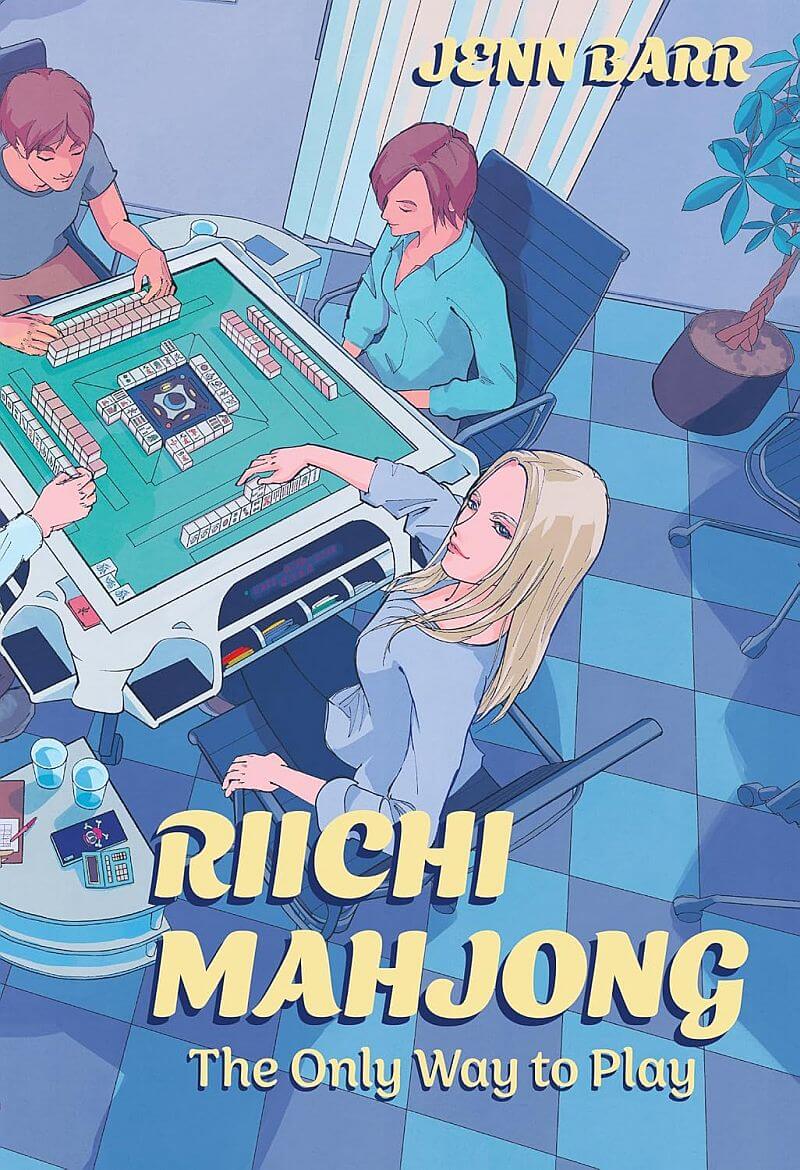
TONY: Given that the first edition was published back in 2009 long before riichi mahjong’s current popularity, what was the most challenging part of updating the book? What needed the most updates?
JENN: Every change we made was listed as a comment on a PDF file. We made about 2000 updates to the book in total. We got rid of the Wild White Dragon section and the new edition still ended up 100 pages longer! The hardest part was deciding where to stop. There is an endless supply of mahjong strategy, terms and other information that can go into a book. So we had to make sure it was organized and easy to follow. My editor, Deke, was amazing and encouraging; the designer Tanya was incredibly patient with my infinite changes. The first edition was a bit rushed to get it to the printer by the deadline, but a lot has changed in publishing since then. This time, we adjusted the deadline to make sure everything was exactly how we wanted it before sending it to print.
TONY: In your opinion, which part of mahjong do you think new players get stuck on the most? How does your book address it?
JENN: In riichi mahjong, the biggest hangups are the required minimum yaku (hand patterns), scoring, and furiten (missed win). I’ve included a ton of details for each one as well as quizzes to reinforce information. It’s easier to learn while playing, but new players can then refer to the book to learn why each of the rules exist and check the nuances of each rule. There is a new section to “guesstimate” scores in order to get there quicker. I also get feedback from people who were inspired by my methods in the book to come up with their own tricks, methods and calculations. The most important theme of mahjong is “there is no one correct answer,” so using my book to inspire other ways of getting unstuck is always an amazing compliment.
Notable Sections on Riichi Mahjong
TONY: There are a number of featurette essays on a variety of mahjong-related topics included in this version that weren’t found in the first edition. Which one was your favorite to write and why?
JENN: Since mahjong strategy and rules can be found all over the internet, the two goals with the second edition were
- To make information accessible in one spot
- To provide a unique perspective that can’t necessarily be found online.
My good friend and mahjong streamer, Tipzntrix, suggested essays; Deke agreed right away. My favorite is probably “Don’t Do That,” which is where I emphasize that “there is no right answer in mahjong.” I wrote that from an incredibly vulnerable position and to be honest, I was ready for backlash. I sent a translated version to Kenji Katsumata, a fellow JPML mahjong pro, before sending the essay to the publisher. He said it was great, so that gave me the confidence to publish it.
TONY: I noticed there was an essay on the usage of Japanese vs. English terms in mahjong. This has been hotly debated in various international communities. Most communities use Japanese terms that can trip up newer players. You use a combination of both Japanese and English and mention that great streaming commentary makes note of it. Why do you think it is important to be mindful of language?
JENN: This is something that I have debated in forums since the beginning of English mahjong time. It always feels cool to use words in another language. In Japan, people love using English all the time because it “sounds cooler.” Personally, my neutral language is a mixture of Japanese and English, even within the same sentence. Not just for mahjong terms but for everything in life.
However, that creates a massive barrier when it comes to commentary, as well as for people with no background or hobbies relating to Japan or the Japanese language as a base. Learning terms in a language that you have no connection to can be challenging. Words can blend together. At the very least, having an English equivalent is always helpful for newbies to relate to the material. If they decide to move on to using Japanese terms later and that’s more fun for them, that’s also wonderful.
Another aspect is that the meaning of many Japanese terms have changed slightly when used in English. Mahjong terms evolve in Japanese and English, so it’s important to have flexibility in terms and make the content accessible to as many people as possible.
TONY: I want to ask about the strategy section, which makes up the last third of the book. It is very extensive with lots of diagrams on how to play hands, read the board, and deal with your opponent’s hands. What would you say are the most important takeaways for new players from that section?
JENN: The most important thing to remember is that your own hand always takes priority. No one can read the board perfectly; the worst thing you can do is lose points because you failed at folding. That’s ten times worse than losing points because you were going for a win with your own hand. Reading discarded tiles is an art that takes an eternity to master, so learn to play your own hand perfectly. Then you can work on reading discards and folding for the entire rest of your career.
Connecting with the North American Riichi Mahjong Community
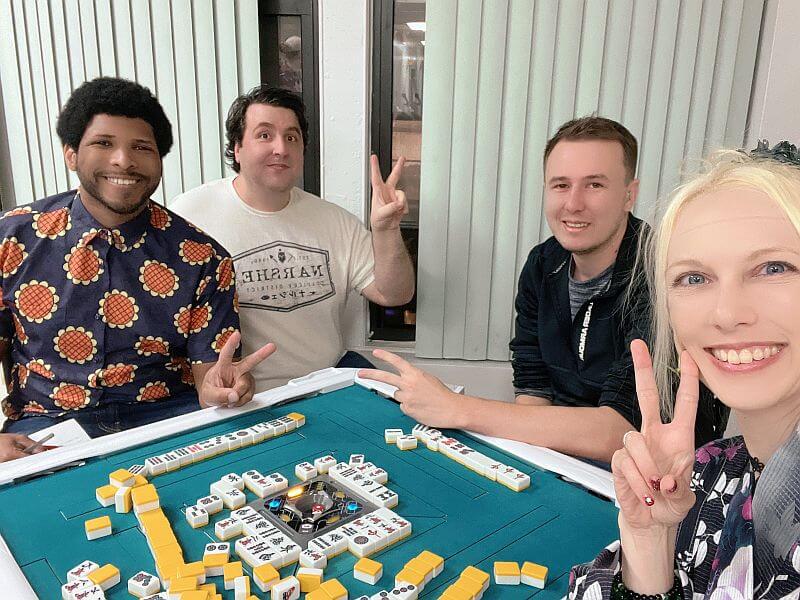
TONY: I want to talk about your involvement with the North American riichi mahjong scene. First off, you participated in the American Riichi Mahjong League (ARML), an online mahjong league focused on improving the overall skill level of North American players, as both a competitor and commentator. What has stood out the most to you about the North American scene?
JENN: Edwin Dizon, the founder, has done an amazing job with ARML and I am honored to be allowed to play. When I told Garthe Nelson, a fellow mahjong pro who’s American like me, he was also immediately excited to play. The skill in North America has shot through the roof in the past five years. People really got into it during the pandemic. I’m jealous because I was so busy taking care of a baby and an elementary-aged child who couldn’t go to daycare/school. So I didn’t get a chance to be with the community online during that time. I’m the one playing catch up now!
This summer, I was also elected as a board member for the American Riichi Association. This is a position I dreamed of holding for two decades, but I thought it was impossible since I am based in Japan. These past few years, though, I have really tried to make connections and support the North American scene. I hope I can contribute to ARA and the entire community. My goal has always been to build and support the community outside of Japan, illustrated by the fact that we started a site called ReachMahjong.com for overseas players way back in 2006. I am excited to contribute to that community in my home country.
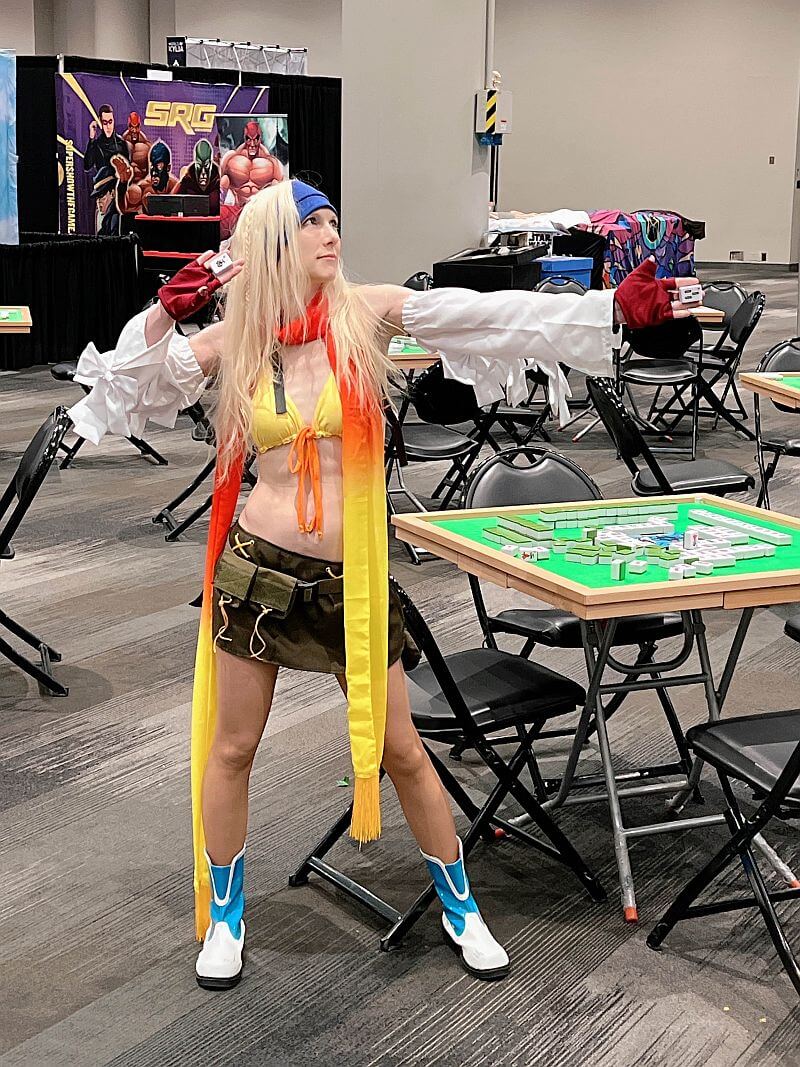
TONY: You have also traveled to New York City twice: once for New York Comic-Con 2023 to promote the New York City mahjong parlor Sparrow’s Nest Studio, and again for New York Comic-Con 2024 to promote your book. What are your favorite memories of being in New York? Any fun stories you can share?
JENN: The Mahjong Matsuri was a highlight of both trips. The same week as Comic Con, we commandeered Sparrow’s Nest, decked it out in a Japanese summer festival theme and had attendees play a mini-tournament with tons of prizes as well as an autograph and photo session. Last year, Xtine, a pillar of the New York mahjong community, joined as a special guest since she created the cover for the book. We dressed in yukata (summertime kimono) and it was so fun.
NYCC itself is just an incredible experience. Seeing so many people line up to learn mahjong and watching people go from never touching a tile in their lives to playing a full hanchan (two-round game) over one weekend is so fulfilling.
Involving the Japanese Mahjong Community to Help Engage Overseas Players

TONY: Besides the book and online commentary, you and fellow American JPML pro Garthe Nelson started a YouTube show called Proast, where you have Japanese mahjong pros “roast” notable English-speaking streamers’ game logs and have them analyze their in-game decisions. How did that idea come about?
JENN: I love to support the riichi community, so I try to watch a lot of streamers on Twitch. Some of the more advanced streamers offer “roasting sessions” where they review a viewer’s hand. This is great, but I know there is a craving for connection between the Japanese and English mahjong communities.
So I pitched the idea of bringing in JPML guests to do the roasting. It’s an extension of “Play Like a Pro”, but a bit more casual. There is also some extra editing so it sounds like we’re having a bilingual conversation. The only problem is that the extra editing means I don’t get episodes up as often as I want to.
Now that I manage three mahjong YouTube channels, I’m hoping to transition to editing full-time until I can afford help with that. We need more followers for that to happen though!
TONY: For new viewers and readers of your book, which Proast episodes would you recommend watching?
JENN: Honestly, after every single recording session, I am just over the moon with how well each episode turned out. The best feedback has come from the Kenji Katsumata episodes, especially the most recent where he explains the relative value of hands. But they all have so much great insight that it’s hard to pick.
TONY: You were recently part of the 2025 World Riichi Championship as a commentator. There has been a big push from the WRC for non-Japanese players to become mahjong pros. What makes now a good time to be one?
JENN: The World Riichi Professional Mahjong program is a great opportunity to connect with JPML/NPM/MU pros for educational purposes, and get support in building your local community. There are opportunities to play at a really high level that you won’t necessarily get from playing ladder online. Getting in at the beginning also means you can help mold what the professional community will look like as we move forward.
The pro industry has evolved so much in Japan over the last 20 years, and there will be evolution outside of Japan as well. That is one of the most important reasons to have an autonomous pro organization not based in Japan. Players outside of Japan know about mahjong in Japan, but I don’t feel like the opposite is true. So it is important that pro organizations outside of Japan are not beholden to the same systems that are imposed within Japan.
TONY: As part of outreach to the overseas English-speaking mahjong community, you helped launch the JPML English YouTube channel as an official English source straight from Japan for mahjong content. What do you hope to see five to ten years from now regarding the global promotion of riichi mahjong? Especially since it was announced that the next WRC tournament will be in New York in 2028.
JENN: For the JPML English channel, I want it to evolve to English coverage of JPML’s biggest final tables. That will be challenging, even within the same organization, due to contracts with non-Youtube streaming services in Japan. But the numbers were so good for the WRC coverage that I think we can build it into something really great.
I also want it to serve as an educational source for Japanese pros. We are working on some really fun ideas that will help link the English and Japanese communities.
Final Thoughts from Jenn

TONY: After playing mahjong professionally for a long time, what lessons from mahjong have you applied to your personal life?
JENN: I started in 2004, so it’s been over 20 years already! Oh my god, I feel so old.
I probably don’t take enough lessons from mahjong to apply to my personal life. I should be saying things like, “You can always get a haneman (a 12000 or dealer 18000 point hand) in All-Last to make a comeback.”
Right now, I’m trying to build that haneman hand with the YouTube channels and other projects.
TONY: Finally, what would you say to anyone who wants to learn mahjong?
JENN: Get the book and ask lots of questions! Make sure you follow the WRC YouTube channel for professional league coverage, the JPML English channel for a different flavor of pro matches/leagues, and the mahjongjen channel for fun and casual livestreams.
We love it when people ask questions in the chat. You can also link up with Discord communities for built-in mahjong friends!
Article edited by: Adam Wescott
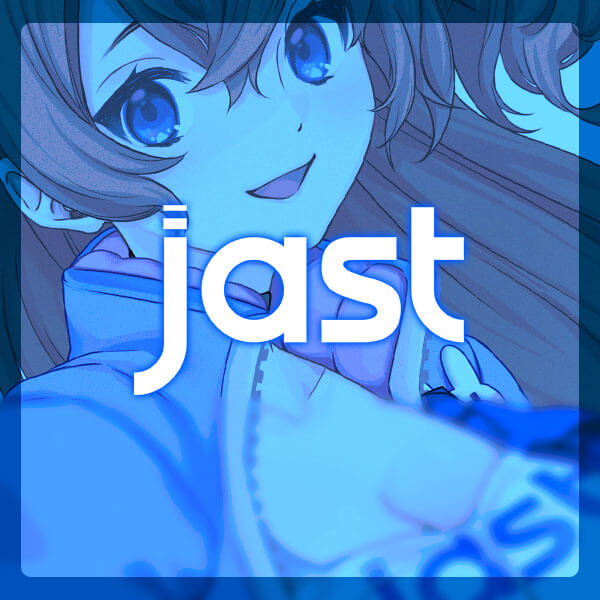
Featured Sponsor - JAST
The sweetest romance and the darkest corruption, the biggest titles and the indie darlings; for visual novels and eroge, there's nowhere better.
Big thank you to our supporters
From their continous support, we are able to pay our team for their time and hard work on the site.
We have a Thank-You page dedicated to those who help us continue the work that we’ve been doing.
See our thank you page


